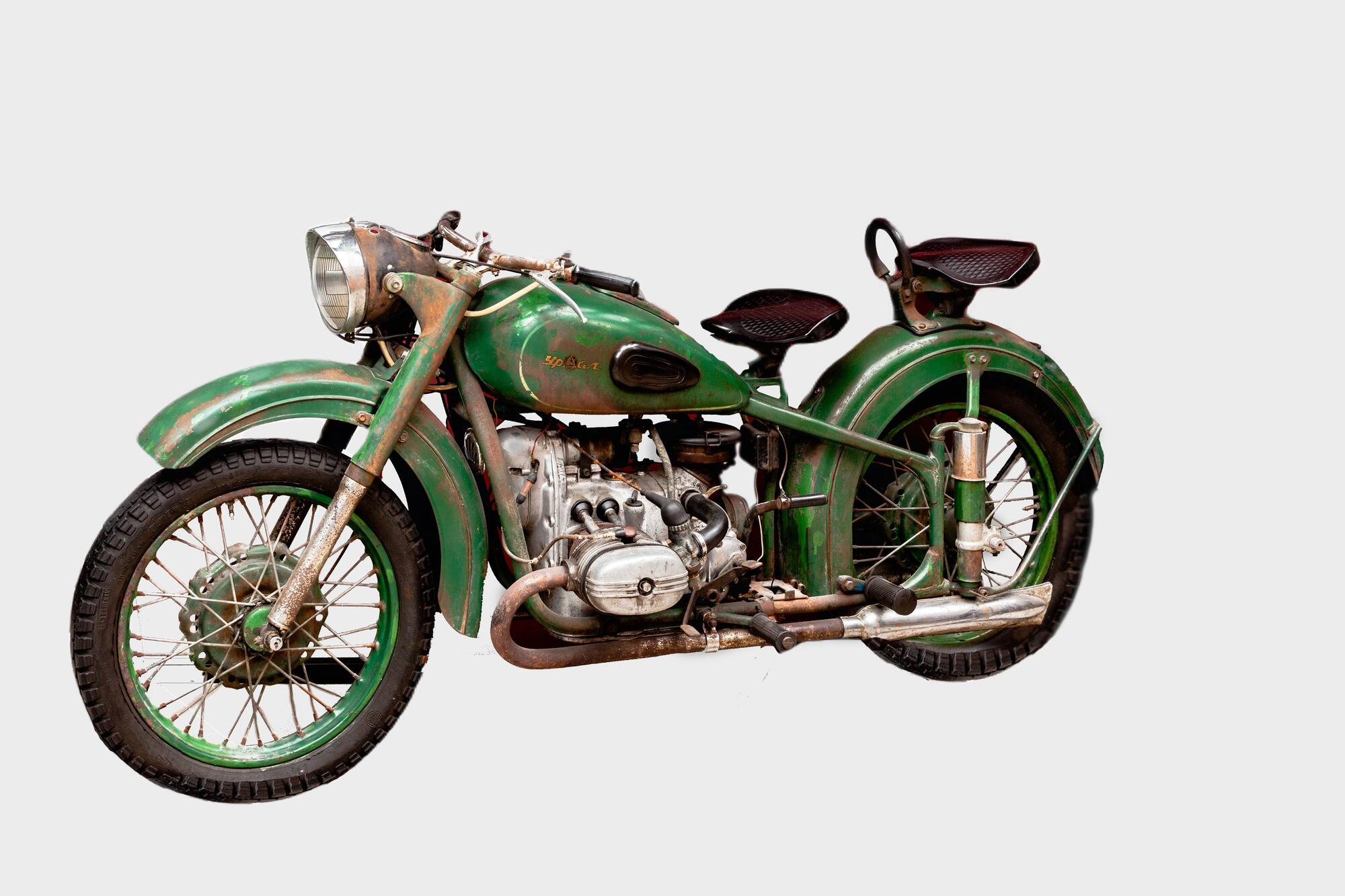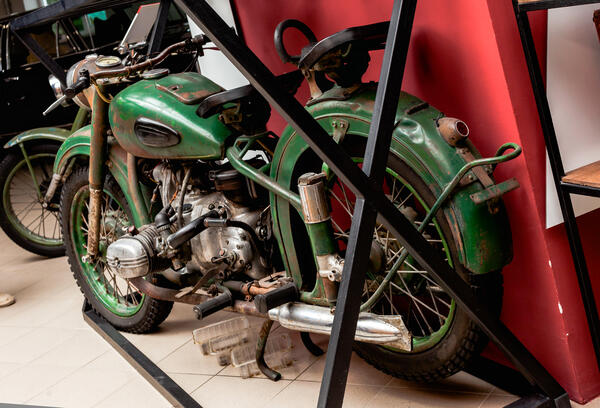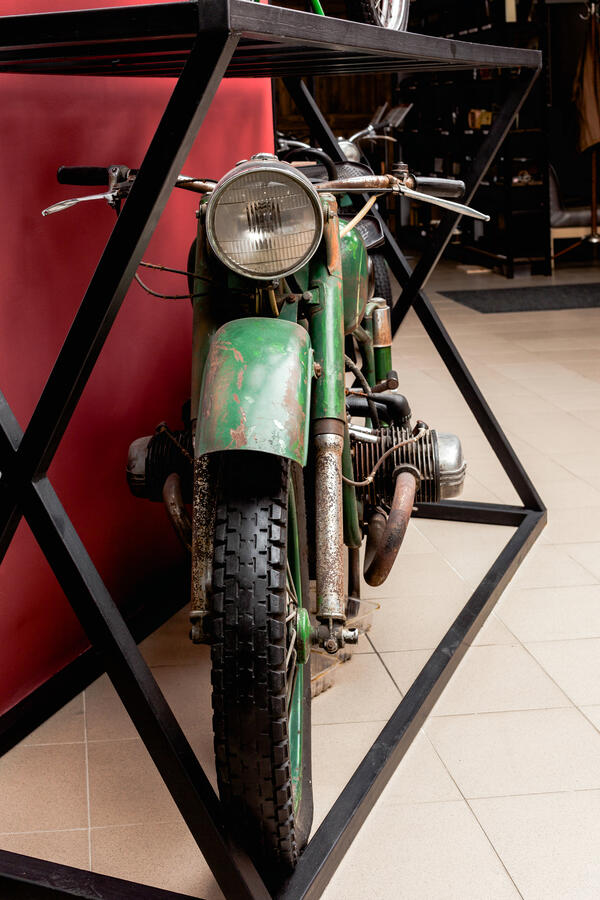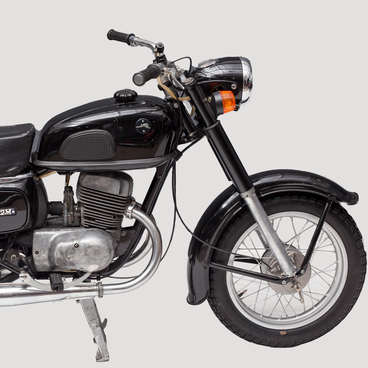In 1961, the Irbit Motorcycle Plant (IMZ Ural) continued manufacturing the earlier M-61 motorcycle and started producing the Ural M-62 heavyweight motorcycle with a sidecar. This model had a new countershaft and an automatic spark advance mechanism.
The engineers managed to increase the engine power by 2 hp to 28 hp. The gearbox was also modified and equipped with clutch gear. Moreover, the gearbox was made compatible with the motorcycles of the Kyiv Motorcycle Plant (KMZ).
The new model had a larger suspension travel and a new shape of the front fork covers. The manufacturer recommended using fuel with an octane rating of at least 76, and the nominal fuel consumption was approximately 8 liters per 100 km. The fuel tank had a capacity of 18 liters. The Ural M-62 motorcycle had a maximum carrying capacity of 255 kg. The engine was cooled by natural air flow. The motorcycle could reach a maximum speed of 105 km/h.
In the Soviet Union, the solo version of this motorcycle — the one that did not have a sidecar — was not commercially available. There were several reasons for that: first of all, the motorcycle was very heavy, and, secondly, it was the fastest motorcycle at the time.
The Soviet authorities and police forces preferred not to have people riding around on such a motorcycle, because it was almost impossible for any other vehicle to catch up with it. The sidecar added weight and decreased the dynamics. The police, on the other hand, often used the M-62 solos.
The Ural M-62 looked like the Dnepr motorcycle, and many of their components were indeed interchangeable. Nevertheless, there were also certain differences. For example, the Dnepr and the Ural had different shapes of the front fender, fuel tank, and elongated seat. Moreover, the Dnepr had a longer gearbox.
The Ural’s engine was considered less demanding in a tough environment, while the Dnepr was easier to repair. However, the latter did not have an oil filter. The Dnepr could have either aluminum or cast iron cylinders, while the Ural could only be equipped with aluminum cylinders that were better at reducing heat.
The engineers managed to increase the engine power by 2 hp to 28 hp. The gearbox was also modified and equipped with clutch gear. Moreover, the gearbox was made compatible with the motorcycles of the Kyiv Motorcycle Plant (KMZ).
The new model had a larger suspension travel and a new shape of the front fork covers. The manufacturer recommended using fuel with an octane rating of at least 76, and the nominal fuel consumption was approximately 8 liters per 100 km. The fuel tank had a capacity of 18 liters. The Ural M-62 motorcycle had a maximum carrying capacity of 255 kg. The engine was cooled by natural air flow. The motorcycle could reach a maximum speed of 105 km/h.
In the Soviet Union, the solo version of this motorcycle — the one that did not have a sidecar — was not commercially available. There were several reasons for that: first of all, the motorcycle was very heavy, and, secondly, it was the fastest motorcycle at the time.
The Soviet authorities and police forces preferred not to have people riding around on such a motorcycle, because it was almost impossible for any other vehicle to catch up with it. The sidecar added weight and decreased the dynamics. The police, on the other hand, often used the M-62 solos.
The Ural M-62 looked like the Dnepr motorcycle, and many of their components were indeed interchangeable. Nevertheless, there were also certain differences. For example, the Dnepr and the Ural had different shapes of the front fender, fuel tank, and elongated seat. Moreover, the Dnepr had a longer gearbox.
The Ural’s engine was considered less demanding in a tough environment, while the Dnepr was easier to repair. However, the latter did not have an oil filter. The Dnepr could have either aluminum or cast iron cylinders, while the Ural could only be equipped with aluminum cylinders that were better at reducing heat.




